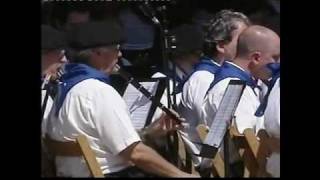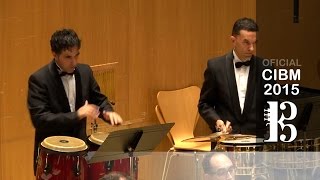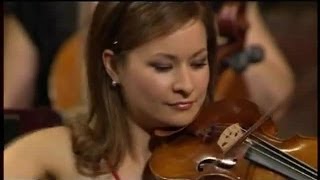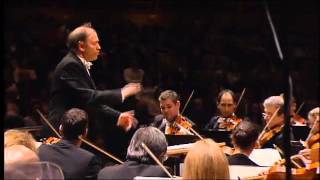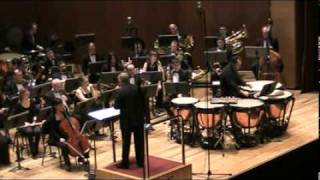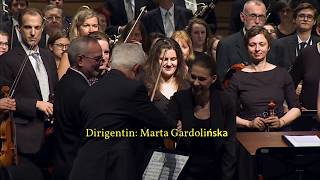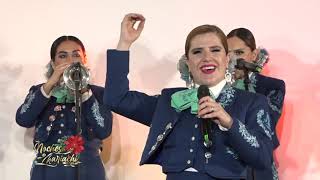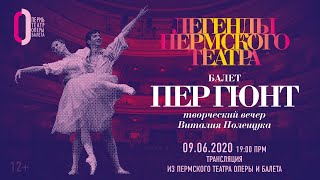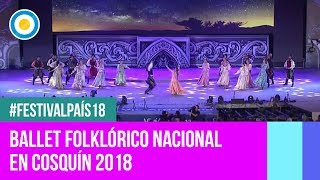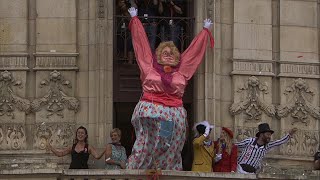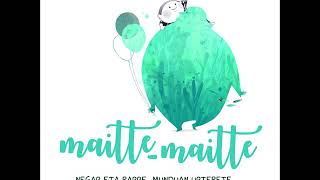Bilbao's Semana Grande (Aste Nagusia) is celebrated annually for 9 days starting on the Saturday following the feast of the Virgin of Begoña (August 15).
Claude Debussy was born on August 22, 1862
Recommended music videos for initiation to classical music
The Bilbao Festivals . It was 1978 when several Bilbao associations decided to organize a contest of ideas for the creation of a Big Week in Bilbao , since to date, the summers in the town hosted only a few scattered events that had little relevance among the citizens. @s. This is how Aste Nagusia (Big Week) in Bilbao was born, which after more than 40 years has become one of the most popular and visited festivals in Euskadi . After the mythical chupinazo and reading of the proclamation, the peculiar Marijaia , symbol of the festivities, will appear on the balcony of the Arriaga Theater to begin the celebrations.
Today we offer Kalejiren potpourria, a potpourri of Basque parades created by Xabier Zabala and performed by the Association of Txistularis and Choirs of Bilbao conducted by the famous txistulari Garikoitz Mendizabal .
Franz Schubert (1797-1828) was an Austrian composer who at the age of 11 was admitted as a member of the choir of the Imperial Chapel in Vienna where he had Salieri as a teacher. At that time, what brought in money was theater and opera, a genre in which he never managed to excel; So he turned to lieder (songs), among which his Ave Maria stands out. and the lieder ensemble La Bella Molinera . Despite dying at the age of 31, he left more than 1,500 works written, including numerous piano and chamber music pieces, 8 symphonies, concert works, incidental music, sacred music (among others, 7 Masses, 1 Oratorio and 1 Requiem). , several singspiel (small operettas), some opera and more than 600 small vocal works, mainly the lieder mentioned.
Catalog of Schubert's works . His works are classified by their Opus number (from the Latin opus 'work'; op. abbreviation) which is a term used in music to catalog the works of most composers since the 17th century .
Ave Maria (" Ellens Gesang III", D. 839, Op. 52 no. 6 , in Spanish " Ellen's Third Song ", is a lied composed by Franz Schubert in 1825. It is one of his most popular works, recorded by a large number and variety of singers with the title "Ave Maria" in arrangements that differ from the original lyrics. The piece is often known as Schubert's "Ave Maria" , but was originally composed as a lied (". song”) that Schubert wrote, based on Walter Scott 's epic poem The Lady of the Lake , in which the protagonist sings a prayer addressed to the Virgin Mary , invoking her help.
Jessye Norman (1945-2019) was an American opera singer with a soprano register, possessor of a powerful voice and imposing presence on stage, both in opera and in concerts and recitals. She was considered one of the most popular and respected dramatic sopranos of her generation. He appeared in leading roles in the world's most important operas, particularly standing out in works by Berlioz, Wagner and lieder by Strauss . In 1984, she won the Grammy Award for Best Classical Vocal Performance, the first of five Grammy Awards she would win during her career. In addition to several honorary doctorates and numerous important awards, he was a member of the British Royal Academy of Music .
Claude Debussy (1862-1918) was a French composer considered the first composer of Impressionism . In 1884, with the cantata L'enfant prodigue he won France 's most prestigious musical award, the Prix de Rome . Back in Paris, he was impressed by Wagner 's opera Tristan und Isolde , “the best thing I have ever heard.” Later he would be influenced by the structures of Javanese music, by the harmonic freedom of Rimski-Korsakov and by Erik Satie , similar to his approaches. In 1894 he premiered his Prélude à l'après-midi d'un faune ; Four years later he achieved international fame with his only completed opera Pelléas et Mélisande ; He was then 37 years old. Today, Debussy is considered one of the most important composers of the 20th century .
Clair de lune (in Spanish, Moonlight ) is the third movement of the Bergamasque Suite that Debussy wrote for piano in 1890, although the work was not published until 1905. This movement, the best known of this suite, is expressed with a tempo andante trés expressif (very expressive andante) and whose predominant dynamic in almost the entire work is the pianissimo , although in its harmonic climax it goes to the forte .
Maria João Pires (1944) is a Portuguese pianist. He gave his first recital at the age of five and at seven he played Mozart's piano concertos in public; At the age of nine he received the Portuguese Musical Youth award. Between 1953 and 1960, he studied with Professor Campos Coelho at the Lisbon Conservatory , taking classes in composition, theory, and music history; He continued his musical studies in Germany with Rosl Schmid and Karl Engel . He gained international fame by winning the Beethoven bicentenary competition in 1970, which was held in Brussels. She is regularly invited by major orchestras from many countries to play in concert halls around the world, and performs regularly in Europe, Canada, Japan and the United States .
Arturo Márquez (1950) is a Mexican composer recognized for using Mexican musical forms and styles in his compositions. His family moved to Los Angeles in 1962; Three years later, at 16, he began studying violin, tuba, trombone and piano, beginning his first compositions with intuitive harmony accompaniment. In 1967 he returned to Navojoa (Sonora) to direct his Municipal Music Band ; From 1970 to 1975 he studied piano at the National Conservatory of Mexico and in 1976, composition at the National Institute of Fine Arts . In 1980, the French government awarded him a two-year training scholarship in Paris ; In 2009 he was awarded the National Prize for Fine Arts of Mexico . “My music always has to do with what is happening around me, especially in the social and ideological part.”
The conga is a popular Cuban dance of African origin that has a syncopated rhythm and is accompanied by drums. It serves as an accompaniment to carnival troupes and originated in the festivities carried out by black slaves. Márquez composes this joyful and festive work of La Conga del Fuego Nuevo to celebrate the arrival of the new 21st century.
Today we present it in the Music Band version offered by the Municipal Symphonic Band of Albacete directed by maestro Santos Gabaldón Fernández
Recommended classical music videos
Piotr Chaikovsky (1840-1893) was a Russian composer who graduated from the Saint Petersburg Conservatory and wrote works of different genres, although where he achieved the greatest success was with his ballets. In 1859 he obtained a civil servant position in the Ministry of Justice , which he would abandon after three years to be able to dedicate himself only to music. His personal life was plagued by continuous crises from the death of his mother to his repressed homosexuality, which forced him into a marriage that only lasted a few months. He wrote more than 150 compositions, including works for piano, quartets, suites, symphonies, concertos, choirs, cantatas, operas and ballets. He died at the age of 53 and is considered one of the greatest composers in history.
The Concerto is a musical form written for one or more solo instruments accompanied by an instrumental ensemble. It was Vivaldi who established the fundamental bases of its structure with three movements ( I fast-II slow-III fast ) and presented as a dialogue between the soloists and the instrumental ensemble. Starting from classicism (1750-1810), especially from the bases created by CPE Bach , the first movement is built following the patterns of the sonata form (exposition, development and reexposition) , while the second and third movements adopt free and punctual forms. Frequently, at the end of the first and/or third movement, the soloists have a cadence without orchestral accompaniment with which they can show off their virtuosity.
Tchaikovsky's Violin Concerto , one of the most renowned and difficult to perform violin concertos, leaves two indelible impressions: that of the virtuosity inherent in its work and that of the beauty of its melodies. THE FIRST MOVEMENT (0´54´´) Allegro moderato begins with a brief, lyrical introduction followed by the melodies that make up the rest of the movement. THE SECOND MOVEMENT (20'57'') Canzonetta: Andante . It begins with a passage in chords played by the woodwinds and the horns, which give way to a traditional Russian melody of a calm nature that serves as a bridge without pause to the THIRD MOVEMENT (27´45´´) Allegro vivacissimo , inspired by developed Russian themes through multiple variations in orchestration, rhythm and melody.
Today it is presented to us by the German violinist Arabella Steinbacher , recognized in Germany and internationally as one of the most outstanding violinists, for her refined technique, musical sensitivity and interpretative depth. He is accompanied by the Tchaikovsky Symphony Orchestra (Moscow Radio Symphony Orchestra) conducted by Russian maestro Vladimir Fedoseyev .
La mer, troisquisses symphoniques pour orchester (The sea, three symphonic sketches for orchestra), or simply La mer , which we offer today, is a work for orchestra that Debussy began writing in 1903 and completed in 1905 during his stay at the English Channel coast, Eastbourne . It was premiered by the Lamoureux orchestra, under the direction of Camille Chevillard , on October 15, 1905 in Paris . It consists of three movements: I (0´14´´) FROM DAWN TO NOON AT THE SEA – VERY SLOW .-. II (9´00´´) WAVE GAMES - ALLEGRO. -. III (16'00'') DIALOGUE OF THE WIND AND THE SEA – LIVELY AND TUMULTUOUS.
Today it is offered to us by the Los Angeles Philharmonic conducted by the eminent Russian maestro Valery Gergiev .
Ney Rosauro (Rio de Janeiro, October 24, 1952) is a Brazilian composer and percussionist, known for his solo concertos for percussion and orchestra. He began his studies in his hometown in 1977; He subsequently studied at the University of Brasilia , where he received his bachelor's degree. He attended the Würzburg Higher School of Music in Germany with Professor Siegfried Fink , where he obtained his master's degree. At the University of Miami , he earned a doctorate and is currently director of percussion studies. As a composer he has written more than 50 works for percussion and some educational books. His works are known around the world and have been performed by well-known artists such as Evelyn Glennie and the London Symphony Orchestra .
The Concerto for Timpani and Orchestra was composed during the summer of 2003 and was made possible by the Max Orovitz Prize from the University of Miami . The work was originally written for timpani and string orchestra, although it premiered in the percussion ensemble version at the University of Miami on October 30, 2003 with Shannon Wood as soloist. My main concern in writing the Concerto was exploring the melodic capabilities that are unique to timpani, rather than having the usual fast percussion patterns that could apply just as well to tom-toms. This, in addition to the tuning changes, adds difficulty to the concert that requires a lot of musicality on the part of the soloist.
Structure . The FIRST MOVEMENT (0´ 24´´), “Bachroque”, is a play on words that describes its baroque atmosphere and is also a tribute to Bach , who is my favorite composer. The form of this movement is a free fugue and has a slower interlude before the recapitulation of the theme. In the SECOND MOVEMENT (6´21´´), “Aria”, the timpanist must demonstrate excellent pedaling skills, while the timpani sing lyrical melodies. Once the main theme is developed, the same thematic material from the first movement interlude is expanded, while the soloist creates some unusual sounds by placing rattles (tiny cymbals) and a cymbal on the head of one of the timpani. The THIRD MOVEMENT (14´42´´), “Horse Ride”, is a lively ragtime in which the soloist must show off his chromatic tuning skills as well as rapid percussion between the five timpani. A solo cadenza is presented before the recapitulation and the concert concludes with an energetic atmosphere. (Extracted from Rosauro's Website)
Today it is offered to us by the solo timpanist Javier Eguillor accompanied by the Bilbao Municipal Band conducted by the Valencian maestro Rafael Sanz-Esper .
Dmitri Shostakovich (1906-1975) is one of the most recognized composers of the 20th century , who had to adapt to the political status with which he had to live. His music was sometimes denounced as decadent and reactionary and other times praised as representative of the new socialist art by the CPSU . In public, he was always loyal to the system and held important responsibilities in artistic institutions, accepting membership in the CPSU in 1960 and becoming a member of the Supreme Soviet . He wrote fifteen string quartets, another fifteen symphonies, six concertos, several operas, as well as film and ballet music. His music stands out for its relevant contrasts and original rhythmic aspects underpinned by an energetic, sometimes burlesque, character.
Catalog of Shostakovich's works . His works are classified by their Opus number (from the Latin opus, 'work'), which is a term used in music to catalog the works of most composers. Since the 17th century , this form of cataloging began to be used every time a work was published, preceding the word Opus , or its abbreviation Op ., to its order number.
Suite für Varieté-Orchester (Suite for Variety Orchestra is a suite in eight movements by Dmitri Shostakovich . The work consists of a collection of movements derived from other works by the composer. For a long time, this Suite for Variety Orchestra was confused with the Jazz Orchestra Suite No. 2 , a distinct work in three movements,
Structure . According to a note from the composer, any number of the pieces may be played, and in any order. The order that we offer today is the following:
I (0´52´´) MARCH .-. II (4´15´´) DANCE Nº 2 .-. III (8´15´´) WALTZ Nº 2 .-. IV (12´10´´) FINALE.
Today's version corresponds to the Akademischer Orchesterverein Wien conducted by the Polish maestro Marta Gardolińska .
Recommended music videos for all tastes
Badator Marijaia is the official song of the Semana Grande festivities in Bilbao , a song sung in Basque with interventions by typical Basque instruments. The creation of a song for the Bilbao Festival involved several Basque artists as well as the Bilbao City Council and the Bilbao Comparsas commission. The song was released on the album Badator Marijaia! : Aste Nagusian Kantetan in 1997 after being produced by Bilboko Jai Batzordea (Bilbao festival commission). Edorta Jiménez wrote the lyrics of the song and Kepa Junkera composed the music and adapted it. Other collaborators on the song were Ibon Koteron, Natxo de Felipe, Anton Latxa, Alex Sardui, Francis Diez, Gorka Sarriegi and Ixiar Oreja .
In just ten years, the Mariachi Femenil Nuevo Tecalitán of Guadalajara , Jalisco, Mexico, has established its reputation as one of the best in the world, sharing stages with Vicente Fernández, Marc Anthony, Mariachi Vargas de Tecalitlán and Joan Sebastian, among others. The group was founded by Ángel Martínez , director of Mariachi Nuevo Tecalitlán , who visited Santa Bárbara with ¡Viva el Arte de Santa Bárbara! in 2013. Under the direction of Lupita Martínez , these 11 young women have performed at festivals throughout Mexico and the United States , and even traveled to London in 2010 . (Extracted from LA Phil article)
Not many artists can boast in Spain of having exceeded eight million copies sold in the world; Amaia Montero yes; It is the fruit of 20 years of musical career, 20 years of a reign in the pop universe that he celebrates with Born to Believe , the album that this June 1 will become the fourth of his solo career. It is, in fact, his most personal album; an album that talks about authentic experiences lived by Amaia . Left behind are her four works with La Oreja de Van Gogh , the group with which she triumphed during the past decade and we are referring to an artist in constant evolution as a composer and as an interpreter of a career that took a new direction ten years ago. years, when he made his solo debut. (Extracted from its official website)
In 1939, the musical-vocal group Los Chimberos emerged in Bilbao led by Goyo Nadal , author of numerous popular songs, from the old and popular “ Himno del Athletic ” to “ Bilbao y sus pueblos ”. After numerous formations over the years, in the year 2000 several descendants of those mythical Chimberos decided to join and re-found the group. His intention continues to be to carry the name of Bilbao and Euskalherria around the world, displaying the good humor of the people of Bilbao, sometimes rescuing from oblivion those songs that so many times brought joy to the taverns and also the theaters, Basque songs and popular music in general, with fresh and renewed air, taking the baton and running with it in the 21st century.
Currently the group is made up of Alberto Núñez (1st voice and guitar), Koldo Villar (2nd voice, and percussions), Jon Basterra (3rd voice and solo guitar) and Emilio Núñez (accordion). (Extracted from Adur's article)
Bilbainada is a typical musical genre from Bizkaia in which, as its name indicates, it talks mainly about Bilbao and its nearby towns. Since 1988, Radio Nervión has been holding a contest focused on this musical genre in which a number of bilbainadas are presented and a prize (according to a jury's assessment) is given to the best song of the contest, and the winner is awarded a statuette of Diego López. de Haro (founder of Bilbao) and a check with an amount of money.
Recommended peculiar videos
The Txistu is a musical instrument that belongs to the European family of the “Three-hole Flute”. It is played with only one hand (normally the left), so that the other is free to play the drum that hangs from the arm used to play the txistu. Currently tuned in F , it is frequently accompanied by the whistle or txistu haundi , a lower instrument, tuned in Bb . The txirula , a higher-pitched instrument, belongs to the same family, which is usually accompanied by the ttun ttun (string drum).
The txistu is used in pilgrimages, parades, tributes, institutional events and in different types of concerts both as a solo instrument accompanied by an orchestra, and as a small band of txistus , in which case the works are usually written for three voices (txistu 1st , txistu 2nd and whistle) with accompaniment of the tambourine and the clear box, atabal or snare drum. On the other hand, it is increasingly common to see him form part of a large group with other txistus, wind instruments and choral formations.
Edvard Grieg (1843-1907) was a Norwegian composer and pianist, considered one of the main representatives of musical romanticism. His mother, Gesine , was his first piano teacher; Later, she met the legendary Norwegian violinist Ole Bull , a family friend and her mother's brother-in-law. Grieg adapted many themes and songs from his country's folklore, thus contributing to creating a Norwegian national identity, just as Jean Sibelius did in Finland or Antonín Dvořák in Bohemia . His most important works are: the Piano Concerto in A minor , the intimate Lyrical Pieces (for piano), the Holberg Suite (for string orchestra) and, especially, Peer Gynt, incidental music that he wrote at the request of the writer Henrik Ibsen for his homonymous drama.
Catalog of Grieg's works . His works are classified by their Opus number (from the Latin opus 'work'; op. abbreviation) which is a term used in music to catalog the works of most composers since the 17th century .
Peer Gynt Opus 23 is a two-act ballet by Edvard Grieg for the play Peer Gynt by Norwegian playwright Henrik Ibsen . Although the two suites that the author himself wrote have become more famous among the general public, Suite No. 1 Op. 46 and No. 2 op. 55 , today we offer the entire ballet staged by the Perm Ballet with Vitaly Poleshchuk and Natalia Moiseeva as main artists.
Tribute to "Chúcaro" Ayala. The seventh moon coscoína featured the presentation of the National Folkloric Ballet . This group debuted on July 9, 1990 at the Teatro Colón in the city of Buenos Aires , under the direction of Santiago "El Chúcaro" Ayala and Norma Viola . Since then, this dance group, made up of 37 dancers, offers performances with the artistic conception of performing choreographic versions and stagings of myths, customs, stories, legends and landscapes while maintaining the essence of the Argentine man. (Comment at the bottom of the video)
For nine days, the party will take over the streets of Bilbao and thousands of people will gather to enjoy the good atmosphere and the multiple cultural activities included in the Bilbao festival program; The musical offering is one of the attractions of Aste Nagusia , with more than 100 free performances in different spaces. On the last day of the festivities Marijaia will once again take center stage. The peculiar character will be burned in the Plaza del Teatro Arriaga before hundreds of spectators, thus marking the end of Bilbao's Semana Grande . (Extracted from the Euskadi Tourism article)
Recommended music videos for children
Various Wikipedia articles have been used to write these texts.
The texts of Videomusicalis are written in Basque, Spanish and English.





